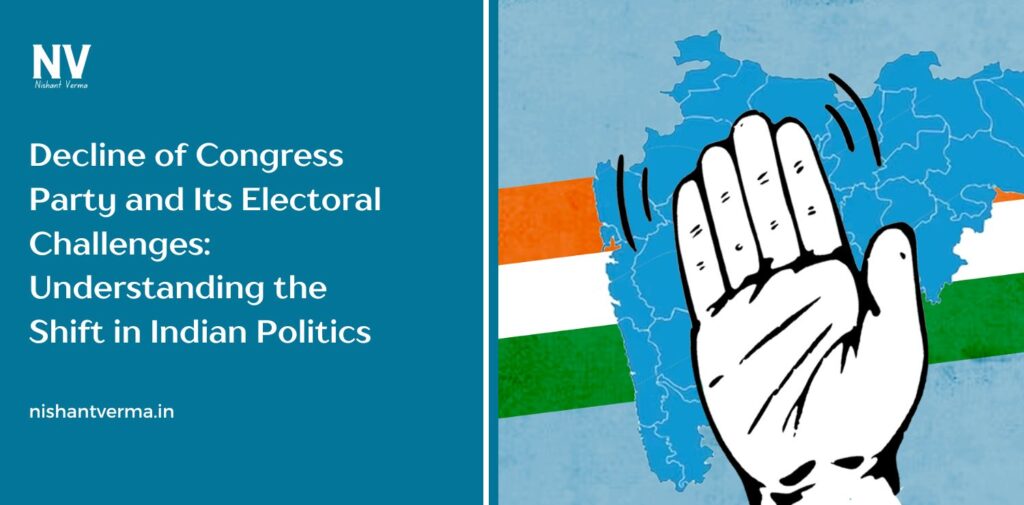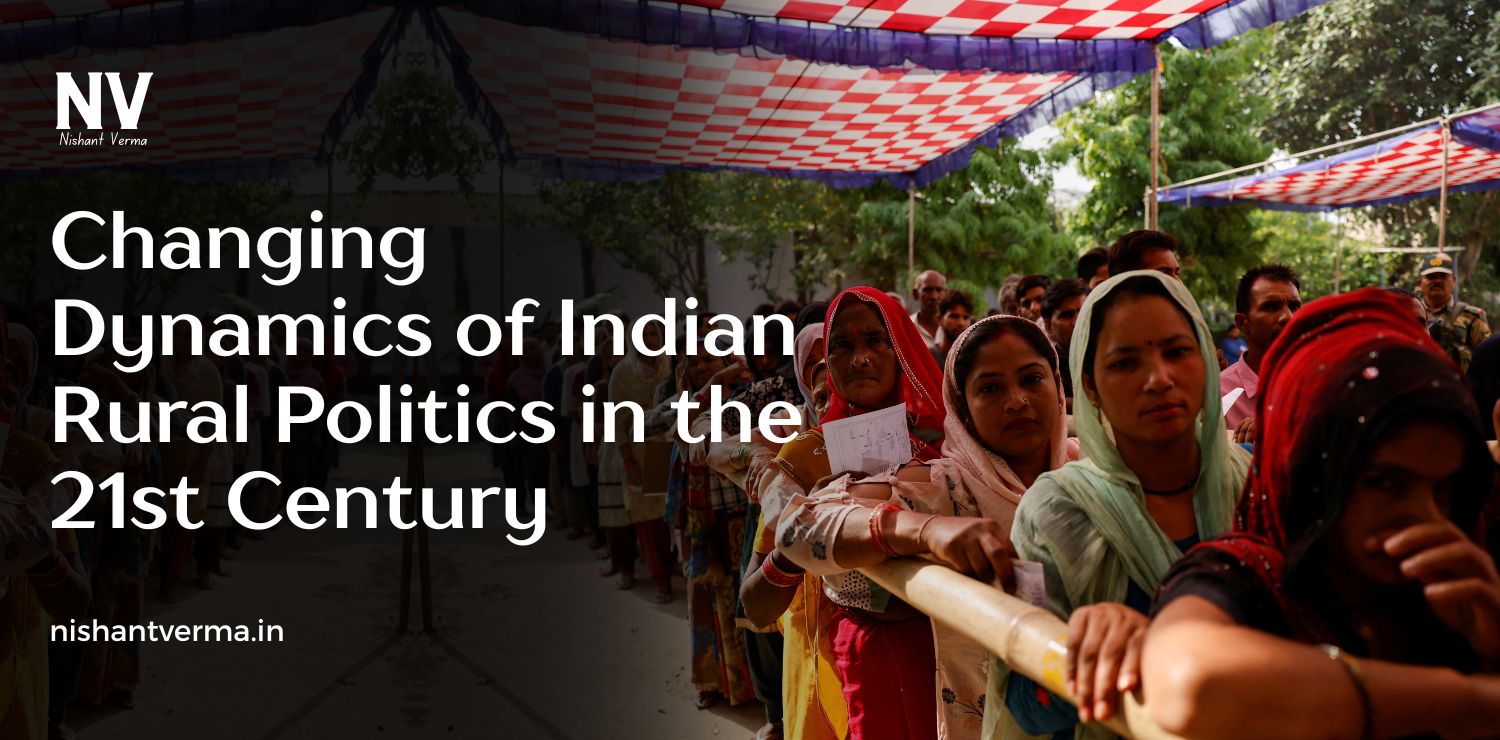The Indian National Congress, or Congress Party, has been one of the most significant political parties in India’s history. Founded in 1885, it played a pivotal role in the struggle for India’s independence and dominated the country’s politics for much of the post-independence era. However, over the last few decades, Congress has faced a sharp decline in its political influence, especially in the face of newer, more dynamic political forces like the Bharatiya Janata Party (BJP). This article will explore the reasons behind the Decline of Congress Party, the electoral challenges it faces, and the broader implications for Indian democracy.
Congress Party’s Historical Dominance
To understand the decline of Congress, we first need to look at its historical significance. Congress, under the leadership of Mahatma Gandhi, Jawaharlal Nehru, and other stalwarts, led India’s freedom struggle and shaped the country’s political landscape after independence in 1947. For several decades, Congress enjoyed near-total dominance in Indian politics. The party, led by influential figures, was seen as the symbol of unity and progress for the diverse and newly independent nation.
After independence, the Congress Party became the dominant force in Indian politics. Jawaharlal Nehru, the first Prime Minister of India, laid the foundation for modern India with policies focused on industrialization, scientific advancement, and social welfare. Even after Nehru’s death in 1964, his successors, like Lal Bahadur Shastri and Indira Gandhi, continued the Congress legacy, although with different political styles.
However, the party’s downfall began when its leadership started to become more dynastic, and the internal challenges began to mount.
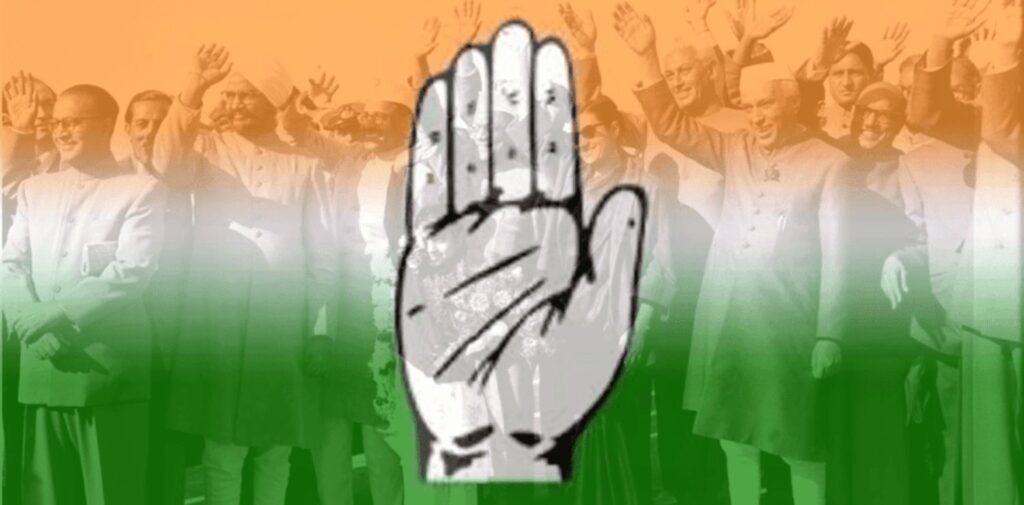
The Emergence of New Political Forces
While Congress was still the dominant party, several political movements started emerging across India. Regional parties like the Samajwadi Party, Trinamool Congress, and Aam Aadmi Party, along with national parties like the Bharatiya Janata Party (BJP), began to challenge Congress’s hold on power.
The BJP, in particular, emerged as a strong contender in the 1990s under the leadership of leaders like Atal Bihari Vajpayee and Lal Krishna Advani. The party’s focus on Hindutva (Hindu nationalism) and its appeal to the growing middle class resonated with voters in many parts of India. Over time, the BJP successfully expanded its base, gaining traction in key states where Congress had once been strong.
Internal Leadership Crisis and Lack of Renewal
One of the major factors contributing to the decline of Congress has been its internal leadership crisis. After Indira Gandhi’s assassination in 1984, the party began to struggle with leadership issues. Rajiv Gandhi, her son, took over as the Prime Minister, but his tenure was marred by corruption scandals and an inability to connect with the masses. The party began to lose its appeal, and regional parties, which were more attuned to local needs, started gaining ground.
In the years that followed, Congress struggled to find strong and charismatic leaders who could unite the country. Although leaders like P. V. Narasimha Rao, Sonia Gandhi, and Manmohan Singh played important roles, the party could not regain its past dominance. The leadership of Congress became increasingly dynastic, centered around the Nehru-Gandhi family. This created an image of the party being more of a family business rather than a democratic institution, alienating many voters.
This dynastic leadership also hindered the party’s ability to renew itself. Younger leaders who could bring fresh ideas to the table were either sidelined or left the party in frustration. As a result, Congress became stagnant, unable to adapt to the changing political environment.
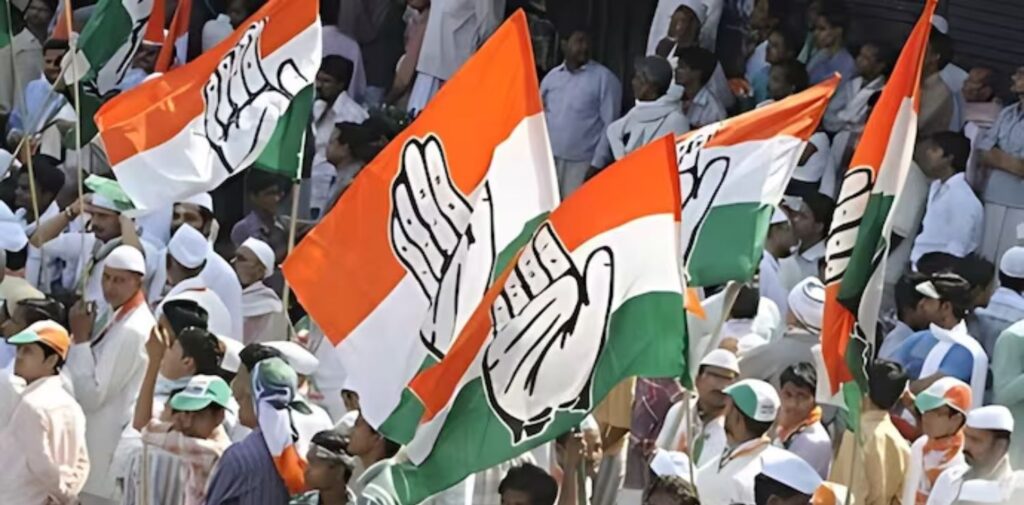
Electoral Challenges Faced by Congress
Over the years, Congress has faced numerous electoral challenges, both at the national and state levels. The rise of regional parties has significantly eroded Congress’s traditional vote base, especially in states like Uttar Pradesh, West Bengal, Tamil Nadu, and Bihar. In these states, regional parties like the Samajwadi Party, Trinamool Congress, and others have become more popular, leading to Congress losing its footing.
At the national level, the Congress Party’s performance in elections has been dismal in recent years. In the 2014 and 2019 General Elections, the party faced massive defeats, losing a significant number of seats in Parliament. The BJP, under the leadership of Prime Minister Narendra Modi, emerged as the dominant force, sweeping most states and securing a commanding majority in the Lok Sabha.
The 2014 defeat was particularly crushing for Congress, as it marked the lowest point in the party’s history. It won only 44 seats out of 543 in the Lok Sabha, a stark contrast to its previous dominance in Indian politics. The party’s inability to offer a strong alternative to the BJP’s agenda and its failure to connect with younger voters were some of the key reasons for its poor performance.
Failure to Connect with Younger Voters
One of the biggest challenges for the Congress Party has been its failure to attract younger voters. India has one of the youngest populations in the world, with a large proportion of its voters being below the age of 35. These young voters are generally more tech-savvy, more globally connected, and more focused on issues like employment, education, and economic opportunities.
Congress has struggled to address the aspirations of these young people. While the BJP has been successful in using social media and digital platforms to engage with voters, Congress has largely lagged behind in this regard. Its traditional approach to campaigning, focused on rallies and speeches, has not resonated with younger, more educated voters who are looking for change and modernization.
Additionally, the Congress Party’s leadership, often dominated by older figures, does not seem to reflect the interests and priorities of the younger generation. This generational disconnect has made it harder for Congress to regain the support of young voters, who are crucial for winning elections in today’s world.
Rise of Identity Politics
Another factor contributing to the decline of Congress is the rise of identity politics in India. Parties like the BJP have been successful in appealing to specific social, religious, and cultural identities, often using nationalism and religion as key campaign tools. This has allowed them to build a strong and loyal voter base.
In contrast, Congress’s inclusive ideology, which sought to appeal to all communities and regions, has lost some of its appeal in a more fragmented political landscape. Congress has struggled to build a distinct identity that can rival the emotional and cultural appeal that other parties, particularly the BJP, have managed to create. In a highly polarized political environment, where voters are increasingly voting along lines of caste, religion, and regionalism, Congress’s broad and centrist appeal seems less effective.
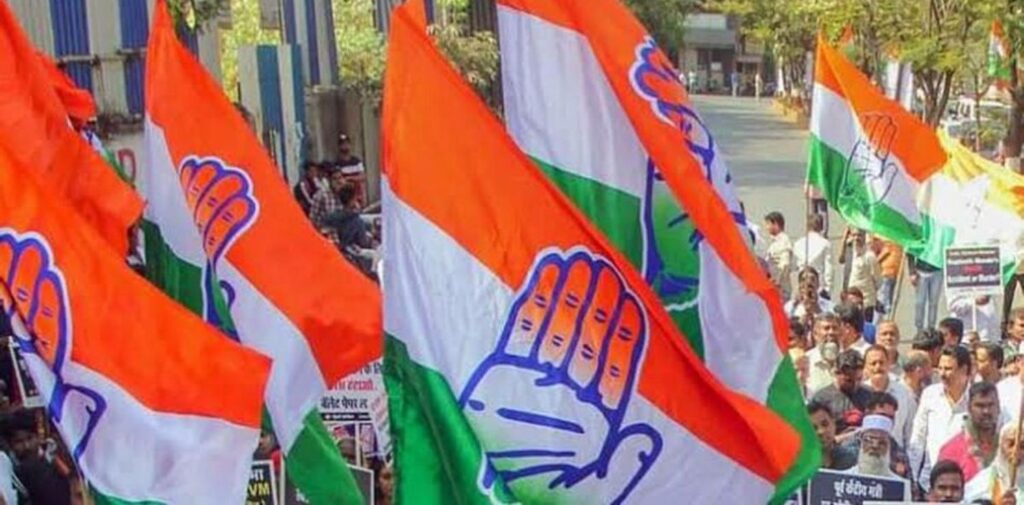
Conclusion: Decline of Congress Party – What’s Next for Congress?
The decline of Congress is a result of multiple factors—internal leadership issues, failure to connect with younger voters, the rise of regional parties, and the growth of identity politics. Despite these challenges, Congress is not entirely out of the game. The party still has a loyal support base, especially in states like Kerala, Punjab, and parts of Karnataka.
For Congress to bounce back, it needs to address its leadership crisis, reinvent its strategies, and most importantly, reconnect with the people. This means engaging more with younger voters, utilizing digital platforms effectively, and creating a clear, distinct identity that appeals to the changing dynamics of Indian society. The party needs to move beyond its dynastic politics and build a leadership structure that is fresh, dynamic, and capable of taking on the BJP’s political juggernaut.
In the end, the Congress Party’s survival depends on its ability to adapt to the changing times, rebuild trust with the electorate, and redefine itself as a force capable of offering real alternatives to the current government. The journey won’t be easy, but history shows that political fortunes can change quickly, and the future of Congress is still uncertain.

